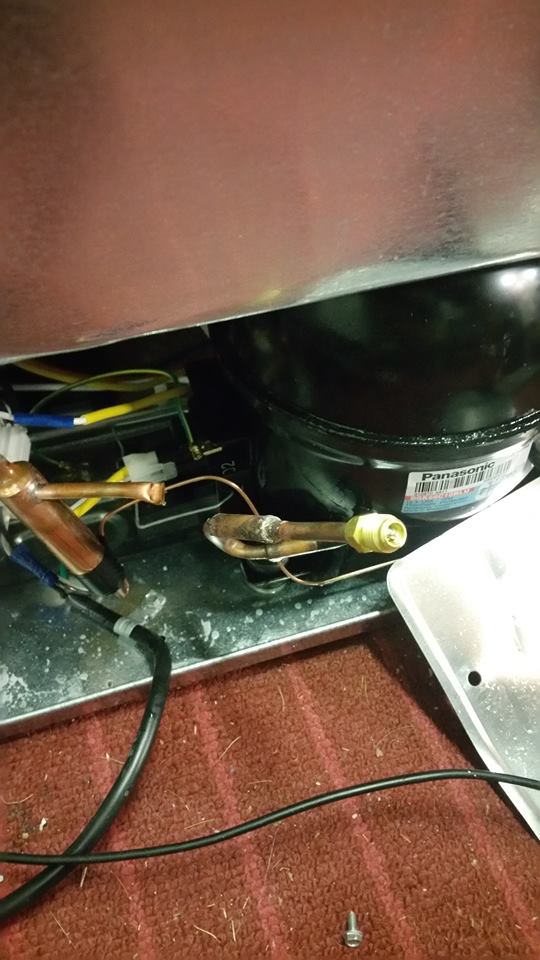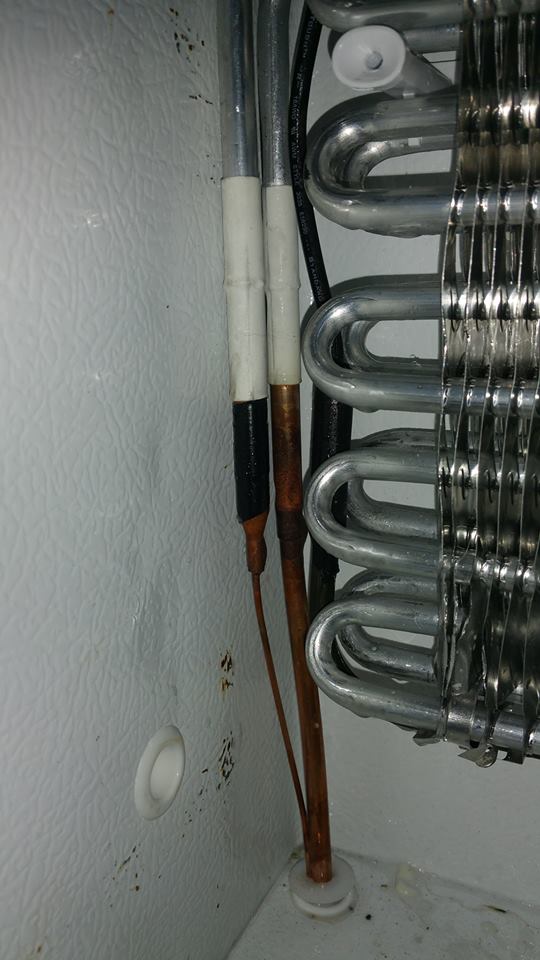NoNothing
Well-Known Member
Hey guys, I bought a brand new 20.2cf Fridgidaire freezer to turn into a keezer.
I have the compressor wired to relay off an SCT-1000 and the fan on 100% of the time.
Both trigger off for 30 mins every 12 hours when the defroster comes on per the installed timer.
I was a genius and had the idea of wiring the fan to the time instead of the heater.
Why I thought it'd be smart to run the compressor without the fan and blow the fan rarely is beyond me. Im sure this is where I went wrong.
So a few days pass, things are OK in the fridge but its usually colder at the bottom than the top. I'd turn the timer manually a few times a day to get 30 mins of air circulation.
After a while I realize it's just warm in the fridge, like, 45, and the compressor had been on a lot, it was HOT.
So I decide to fix my lunacy and bypass the timer completely. Not relaying the fan yet but 100% fan and temp controlled compressor. Figured I'd just muck with the fan on compressor at a later point.
Now I notice the fridge does not cool. The evap does not get cold and the sides of the fridge do not get warm. I'm certain the compressor is on and running, I can feel it's warmth after a while of it being on and it's physically moving.
What could have gone wrong and how can I try to solve it? Or am I in a 'oh ****, you ran the compressor with no airflow on the evap and now it's all ****ed from coolant or oil or some ****'?
I'm going to call a repair guy after the holiday as this could never be covered under warranty but I'm hoping I can fix it myself if possible before then.
I have the compressor wired to relay off an SCT-1000 and the fan on 100% of the time.
Both trigger off for 30 mins every 12 hours when the defroster comes on per the installed timer.
I was a genius and had the idea of wiring the fan to the time instead of the heater.
Why I thought it'd be smart to run the compressor without the fan and blow the fan rarely is beyond me. Im sure this is where I went wrong.
So a few days pass, things are OK in the fridge but its usually colder at the bottom than the top. I'd turn the timer manually a few times a day to get 30 mins of air circulation.
After a while I realize it's just warm in the fridge, like, 45, and the compressor had been on a lot, it was HOT.
So I decide to fix my lunacy and bypass the timer completely. Not relaying the fan yet but 100% fan and temp controlled compressor. Figured I'd just muck with the fan on compressor at a later point.
Now I notice the fridge does not cool. The evap does not get cold and the sides of the fridge do not get warm. I'm certain the compressor is on and running, I can feel it's warmth after a while of it being on and it's physically moving.
What could have gone wrong and how can I try to solve it? Or am I in a 'oh ****, you ran the compressor with no airflow on the evap and now it's all ****ed from coolant or oil or some ****'?
I'm going to call a repair guy after the holiday as this could never be covered under warranty but I'm hoping I can fix it myself if possible before then.




